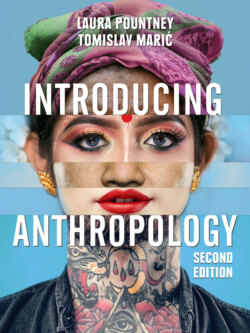Читать книгу Introducing Anthropology - Laura Pountney - Страница 113
Scarification
ОглавлениеScarification is a way of permanently marking the body by cutting the skin and is often carried out as part of a ritual. Scarification was, and is still today, practised most widely in Africa and among Australian Aboriginal people. The main point of African scarification is to beautify, although scars of a certain type, size and position on the body often indicate group identity or stages in a person’s life. Among the Dinka of Sudan, facial scarification, usually around the temple area, is used for clan identification. In southern Sudan, Nuba girls traditionally receive marks on their forehead, chest and abdomen at the beginning of puberty. At first menstruation they receive a second set of cuts, this time under the breasts. These are enlarged by a final, extensive phase of scarring after the weaning of the first child, resulting in designs stretching across the sternum, back, buttocks, neck and legs. Nuba scarification is determined by social status and maturity and is perceived as a mark of beauty. In the context of the cultural traditions of the Dinka and Nuba, the individual has little choice in the matter of scarification.
In other parts of Africa, scarification is carried out for different reasons. Pain and blood can play a large part in the scarification process, determining a person’s fitness, endurance and bravery. This is especially the case in puberty rites, since a child must prove a readiness to face the responsibilities of adulthood, in particular the prospect of injury or death in battle for men and the trauma of childbirth for women. However, traditional scarification has declined in Africa, Australia and elsewhere as a result of health concerns and politico-cultural changes.
A Datoga woman with traditional facial scarification. (Kathy Gerber / Wikimedia Commons)
